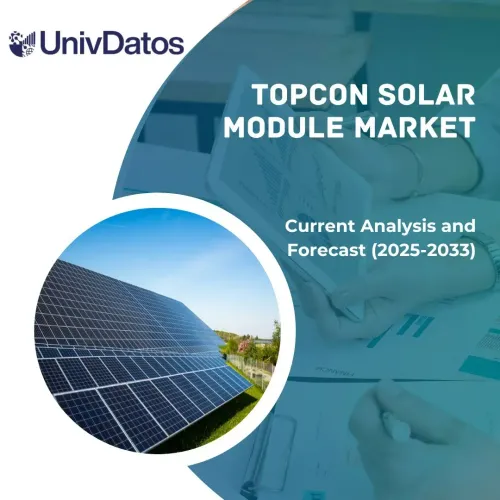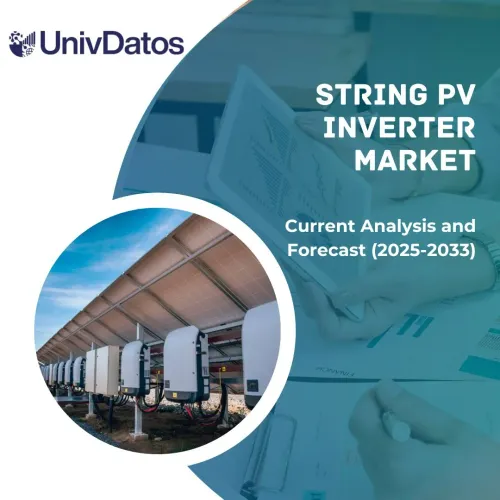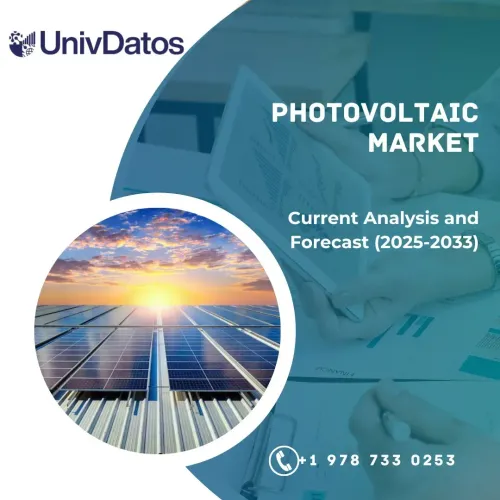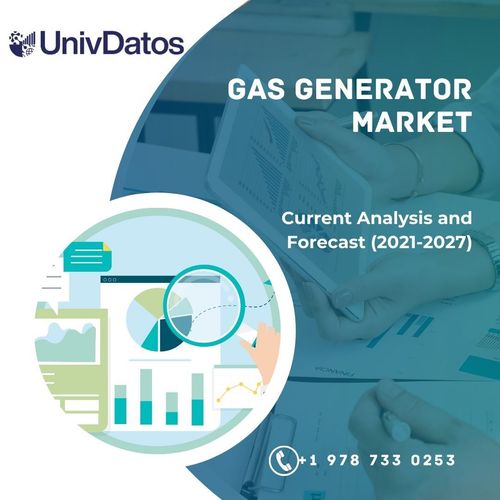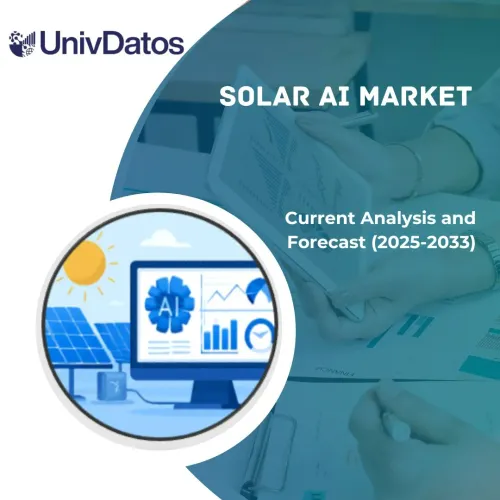- الرئيسية
- معلومات عنا
- صناعة
- الخدمات
- قراءة
- اتصل بنا
سوق الاستشارات البيئية والاجتماعية والحوكمة والاستدامة في الهند: تحليل وتوقعات حالية (2022-2030)
التركيز على نوع المنتج (البرمجيات والخدمات)؛ نوع الخدمة (مخاطر المناخ والتكيف والقدرة على التكيف؛ التمويل والاستثمار المستدام؛ تقييمات الأهمية النسبية؛ إدارة سلسلة التوريد والمشتريات؛ تطوير السياسات والبحث؛ وخدمات أخرى)؛ قطاع الصناعة (الطاقة والموارد، الخدمات المالية، الرعاية الصحية، التصنيع، الأدوية والتكنولوجيا الحيوية، البيع بالتجزئة، وقطاعات صناعية أخرى)
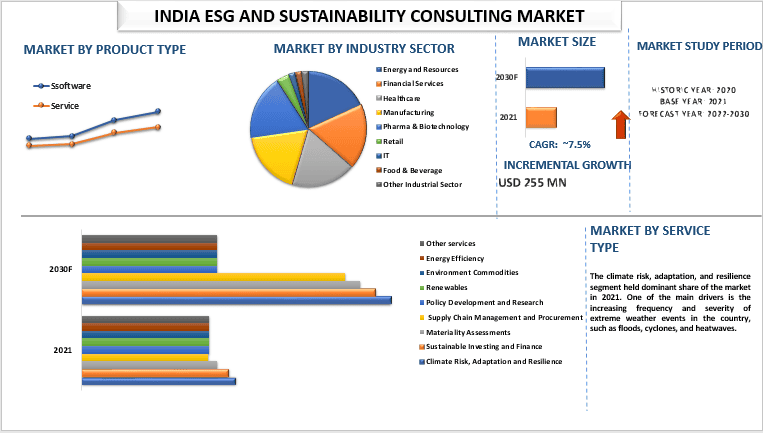
بلغت قيمة سوق الاستشارات البيئية والاجتماعية والحوكمة والاستدامة في الهند 255.21 مليون دولار أمريكي في عام 2021 ومن المتوقع أن ينمو بمعدل نمو سنوي مركب قدره 7.42٪ من 2022-2030.
أدركت العديد من الشركات الهندية أهمية الاستدامة وبدأت في تنفيذ مبادرات الاستدامة. وقد أدى ذلك إلى خلق طلب على خدمات الاستشارات البيئية والاجتماعية والحوكمة والاستدامة لمساعدتهم على فهم تأثير عملياتهم ووضع استراتيجيات لتقليل بصمتهم البيئية والاجتماعية. على سبيل المثال، في عام 2021، أعلنت شركة Hero Future Energies عن تحالف استراتيجي مع شركة Swiss Re لتطوير وتشغيل مشاريع الطاقة الشمسية وطاقة الرياح في الهند. تهدف الشراكة إلى دعم نمو الطاقة المتجددة في الهند ومساعدة شركة Swiss Re على تحقيق أهدافها في مجال الاستدامة.
بعض الجهات الفاعلة الرئيسية العاملة في السوق تشمل
ماكينزي، ديلويت، مجموعة بوسطن الاستشارية، EY، KMPG، بين آند كومباني، LEK Consulting، pWc، ميرسر، و DSS+. وقد قامت هذه الجهات الفاعلة بالعديد من عمليات الاندماج والاستحواذ إلى جانب الشراكات لتزويد العملاء بمنتجات/تقنيات مبتكرة وعالية التقنية.’
الرؤى المقدمة في التقرير
“من بين أنواع الخدمات، استحوذ قطاع تقييم الأهمية النسبية على حصة كبيرة من السوق في عام 2021”
بناءً على نوع الخدمة، يتم تقسيم السوق إلى مخاطر المناخ والتكيف والقدرة على التكيف؛ التمويل والاستثمار المستدام؛ تقييمات الأهمية النسبية؛ إدارة سلسلة التوريد والمشتريات؛ تطوير السياسات والبحث؛ وخدمات أخرى. استحوذ قطاع تقييم الأهمية النسبية على حصة كبيرة من السوق في عام 2021. تقييم الأهمية النسبية هو عملية تحديد وتحديد أولويات أهم قضايا البيئة والاجتماعية والحوكمة التي تؤثر على الأداء المالي للشركة وسمعتها ومصالح أصحاب المصلحة. أصبحت تقييمات الأهمية النسبية أداة أساسية للشركات التي تتطلع إلى تحسين أدائها في مجال البيئة والاجتماعية والحوكمة وإعداد التقارير. تساعد هذه التقييمات الشركات على تحديد قضايا البيئة والاجتماعية والحوكمة الأكثر صلة بعملياتها التجارية وأصحاب المصلحة وسلسلة القيمة الخاصة بها، وتحديد أولويات جهودها لمعالجتها. علاوة على ذلك، فإن زيادة الاستثمار من قبل الشركات تدفع أيضًا نمو القطاع. على سبيل المثال، في فبراير 2021، أعلنت شركة ESGBox الهندية لبيانات وتحليلات البيئة والاجتماعية والحوكمة عن شراكة جديدة مع شركة الاستشارات في مجال الاستدامة ERM. ستركز الشراكة على توفير تقييمات الأهمية النسبية وخدمات استشارات الاستدامة الأخرى للشركات في الهند وعبر منطقة آسيا والمحيط الهادئ.
“من بين أنواع المنتجات، من المتوقع أن تنمو فئة البرمجيات بمعدل نمو سنوي مركب مرتفع خلال الفترة المتوقعة”
حسب نوع المنتج، ينقسم السوق إلى برمجيات وخدمات. من المتوقع أن تنمو فئة البرمجيات بمعدل نمو سنوي مركب كبير خلال الفترة المتوقعة، ويرجع ذلك بشكل رئيسي إلى الإطلاقات السريعة للمنتجات واعتمادها بشكل أكبر بين الشركات. على سبيل المثال، في يوليو 2022، أطلقت شركة Tata Consultancy Services حل تكامل البيئة والاجتماعية والحوكمة الخاص بها على منصة Amazon Web Services (AWS) لمساعدة المؤسسات المالية على قياس تأثير عوامل البيئة والاجتماعية والحوكمة (ESG) في تحليل استثماراتها بسهولة ودقة أكبر.
تغطية تقرير سوق الاستشارات البيئية والاجتماعية والحوكمة والاستدامة
سمة التقرير | تفاصيل |
السنة الأساسية | 2021 |
الفترة المتوقعة | 2022-2030 |
الزخم النمو | التسارع بمعدل نمو سنوي مركب قدره 7.5٪ |
حجم السوق 2021 | 255 مليون دولار أمريكي |
التحليل الإقليمي | الهند |
الشركات المذكورة | ماكينزي، ديلويت، مجموعة بوسطن الاستشارية، EY، KMPG، بين آند كومباني، LEK Consulting، pWc، ميرسر، و DSS+. |
نطاق التقرير | اتجاهات السوق، والمحركات، والقيود؛ تقدير الإيرادات والتوقعات؛ تحليل التقسيم؛ تأثير كوفيد-19؛ تحليل جانب العرض والطلب؛ المشهد التنافسي؛ تحديد ملف تعريف الشركة |
القطاعات المشمولة | حسب نوع المنتج؛ حسب نوع الخدمة؛ حسب قطاع الصناعة |
“من بين قطاع الصناعة، من المتوقع أن ينمو قطاع تكنولوجيا المعلومات بمعدل نمو سنوي مركب مرتفع خلال الفترة المتوقعة”
بناءً على قطاع الصناعة، يتم تقسيم السوق إلى الطاقة والموارد، الخدمات المالية، الرعاية الصحية، التصنيع، الأدوية والتكنولوجيا الحيوية، البيع بالتجزئة، وقطاعات صناعية أخرى. من المتوقع أن ينمو قطاع تكنولوجيا المعلومات بأعلى معدل نمو سنوي مركب خلال الفترة المتوقعة. تعد صناعة تكنولوجيا المعلومات في الهند واحدة من أكبر الصناعات وأسرعها نموًا في العالم ولها تأثير كبير على البيئة والمجتمع. ونتيجة لذلك، هناك طلب متزايد على خدمات الاستشارات البيئية والاجتماعية والحوكمة والاستدامة في هذا القطاع. يشمل تركيز الاستشارات البيئية والاجتماعية والحوكمة والاستدامة في قطاع تكنولوجيا المعلومات مجموعة واسعة من القضايا مثل خفض انبعاثات الكربون، والحفاظ على الطاقة والمياه، والإدارة المسؤولة للنفايات الإلكترونية، وإدارة سلسلة التوريد المستدامة، وخصوصية البيانات والأمن، والقضايا الاجتماعية والأخلاقية المتعلقة بالعمل. أحد الاستثمارات الحديثة في سوق الاستشارات البيئية والاجتماعية والحوكمة والاستدامة في قطاع تكنولوجيا المعلومات في الهند هو التعاون بين شركة Infosys والشركة المنغولية Clean Energy Asia LLC (CEA). أعلنت شركة Infosys، وهي شركة استشارية رائدة في مجال تكنولوجيا المعلومات في الهند، أنها ستستثمر 3 ملايين دولار أمريكي في CEA، والتي تتخصص في الطاقة المتجددة والتكنولوجيا النظيفة.
أسباب شراء هذا التقرير:
- تتضمن الدراسة تحليل حجم السوق والتوقعات التي تم التحقق منها من قبل خبراء الصناعة الرئيسيين الموثوق بهم.
- يقدم التقرير مراجعة سريعة للأداء العام للصناعة في لمحة.
- يغطي التقرير تحليلاً متعمقًا لنظرائه البارزين في الصناعة مع التركيز الأساسي على البيانات المالية التجارية الرئيسية ومحافظ المنتجات واستراتيجيات التوسع والتطورات الأخيرة.
- فحص مفصل للمحركات والقيود والاتجاهات الرئيسية والفرص السائدة في الصناعة.
- تغطي الدراسة السوق بشكل شامل عبر القطاعات المختلفة.
- تحليل متعمق على المستوى الإقليمي للصناعة.
خيارات التخصيص:
يمكن تخصيص سوق الاستشارات البيئية والاجتماعية والحوكمة والاستدامة في الهند بشكل أكبر وفقًا للمتطلبات أو أي قطاع سوق آخر. إلى جانب ذلك، تدرك UMI أن لديك احتياجات عملك الخاصة، لذا لا تتردد في التواصل معنا للحصول على تقرير يناسب متطلباتك تمامًا.
جدول المحتويات
منهجية البحث لتحليل سوق الاستشارات البيئية والاجتماعية والحوكمة والاستدامة (2022-2030)
كانت الخطوات الثلاث الرئيسية التي تم اتخاذها لإنشاء وتحليل اعتماد الاستشارات البيئية والاجتماعية والحوكمة والاستدامة في الولايات الرئيسية هي تحليل السوق التاريخي، وتقدير السوق الحالية، والتنبؤ بالسوق المستقبلية للاستشارات البيئية والاجتماعية والحوكمة والاستدامة في الهند. تم إجراء بحث ثانوي شامل لجمع أرقام السوق التاريخية وتقدير حجم السوق الحالي. ثانيًا، للتحقق من صحة هذه الرؤى، تم أخذ العديد من النتائج والافتراضات في الاعتبار. علاوة على ذلك، أجريت أيضًا مقابلات أولية شاملة مع خبراء الصناعة عبر سلسلة القيمة لسوق الاستشارات البيئية والاجتماعية والحوكمة والاستدامة في الهند. بعد افتراض والتحقق من صحة أرقام السوق من خلال المقابلات الأولية، استخدمنا نهجًا من أعلى إلى أسفل/من أسفل إلى أعلى للتنبؤ بحجم السوق الكامل. بعد ذلك، تم اعتماد أساليب تقسيم السوق وتثليث البيانات لتقدير وتحليل حجم السوق لقطاعات وتحت قطاعات الصناعة ذات الصلة. يتم شرح المنهجية التفصيلية أدناه:
تحليل حجم السوق التاريخي
الخطوة 1: دراسة متعمقة للمصادر الثانوية:
تم إجراء دراسة ثانوية تفصيلية للحصول على حجم السوق التاريخي لسوق الاستشارات البيئية والاجتماعية والحوكمة والاستدامة من خلال المصادر الداخلية للشركة مثل التقارير السنوية والبيانات المالية وعروض الأداء والبيانات الصحفية،إلخ،والمصادر الخارجية بما في ذلك المجلات والأخبار والمقالات والمنشورات الحكومية ومنشورات المنافسين وتقارير القطاعات وقاعدة بيانات الطرف الثالث والمنشورات الموثوقة الأخرى.
الخطوة 2: تقسيم السوق:
بعد الحصول على حجم السوق التاريخي لسوق استشارات الحوكمة البيئية والاجتماعية وحوكمة الشركات والاستدامة، أجرينا تحليلًا ثانويًا تفصيليًا لجمع رؤى السوق التاريخية والحصة للشرائح والشرائح الفرعية المختلفة للمناطق الرئيسية. يتم تضمين القطاعات الرئيسية في التقرير كنوع المنتج ونوع الخدمة والقطاع الصناعي. أجريت مزيد من التحليلات على مستوى الدولة لتقييم الاعتماد العام لنماذج الاختبار في تلك المنطقة.
الخطوة 3: تحليل العوامل:
بعد الحصول على حجم السوق التاريخي للشرائح والشرائح الفرعية المختلفة، أجرينا تحليلًا عامليًا تفصيليًا لتقدير حجم السوق الحالي لسوق استشارات الحوكمة البيئية والاجتماعية وحوكمة الشركات والاستدامة. علاوة على ذلك، أجرينا تحليلًا عامليًا باستخدام متغيرات تابعة ومستقلة مثل نوع المنتج ونوع الخدمة وصناعة سوق استشارات الحوكمة البيئية والاجتماعية وحوكمة الشركات والاستدامة. تم إجراء تحليل شامل لسيناريوهات العرض والطلب مع الأخذ في الاعتبار أهم الشراكات وعمليات الاندماج والاستحواذ والتوسع في الأعمال وإطلاق المنتجات في قطاع سوق استشارات الحوكمة البيئية والاجتماعية وحوكمة الشركات والاستدامة في جميع أنحاء العالم.
تقدير وتوقعات حجم السوق الحالي
تحديد حجم السوق الحالي:بناءً على رؤى قابلة للتنفيذ من الخطوات الثلاث المذكورة أعلاه، توصلنا إلى حجم السوق الحالي، واللاعبين الرئيسيين في سوق استشارات الحوكمة البيئية والاجتماعية وحوكمة الشركات والاستدامة في الهند، وحصص السوق للقطاعات. تم تحديد جميع حصص النسب المئوية المطلوبة والانقسامات وتوزيعات السوق باستخدام النهج الثانوي المذكور أعلاه وتم التحقق منها من خلال المقابلات الأولية.
التقدير والتنبؤ:لتقدير السوق والتنبؤ به، تم تخصيص أوزان لعوامل مختلفة بما في ذلك المحركات والاتجاهات والقيود والفرص المتاحة لأصحاب المصلحة. بعد تحليل هذه العوامل، تم تطبيق تقنيات التنبؤ ذات الصلة، أي النهج التصاعدي / التنازلي للتوصل إلى توقعات السوق لعام 2030 للشرائح والشرائح الفرعية المختلفة عبر الأسواق الرئيسية. تشمل منهجية البحث المعتمدة لتقدير حجم السوق:
- حجم سوق الصناعة من حيث الإيرادات (بالدولار الأمريكي) ومعدل اعتماد سوق استشارات الحوكمة البيئية والاجتماعية وحوكمة الشركات والاستدامة عبر الأسواق الرئيسية محليًا
- جميع حصص النسب المئوية والانقسامات وتوزيعات قطاعات السوق والشرائح الفرعية
- اللاعبين الرئيسيين في سوق استشارات الحوكمة البيئية والاجتماعية وحوكمة الشركات والاستدامة في الهند من حيث المنتجات المعروضة. أيضًا، استراتيجيات النمو التي يتبناها هؤلاء اللاعبون للمنافسة في السوق سريعة النمو
التحقق من حجم السوق وحصته
البحث الأولي:أجريت مقابلات متعمقة مع قادة الرأي الرئيسيين (KOLs) بمن فيهم كبار المسؤولين التنفيذيين (CXO / VPs، ورئيس المبيعات، ورئيس التسويق، ورئيس العمليات، والرئيس الإقليمي، ورئيس الدولة، وما إلى ذلك) عبر المناطق الرئيسية. ثم تم تلخيص نتائج البحث الأولية، وإجراء تحليل إحصائي لإثبات الفرضية المذكورة. تم دمج المدخلات من البحث الأولي مع النتائج الثانوية، وبالتالي تحويل المعلومات إلى رؤى قابلة للتنفيذ.
تقسيم المشاركين الأوليين في مناطق مختلفة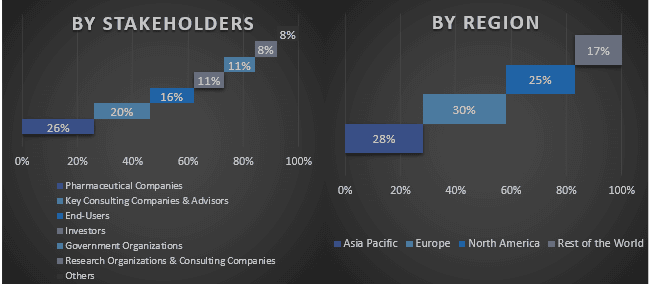
هندسة السوق
تم توظيف تقنية تثليث البيانات لإكمال تقدير السوق العام والتوصل إلى أرقام إحصائية دقيقة لكل شريحة وشريحة فرعية من سوق استشارات الحوكمة البيئية والاجتماعية وحوكمة الشركات والاستدامة في الهند. تم تقسيم البيانات إلى عدة شرائح وشرائح فرعية بعد دراسة معلمات واتجاهات مختلفة في مجالات نوع المنتج ونوع الخدمة والصناعة في سوق استشارات الحوكمة البيئية والاجتماعية وحوكمة الشركات والاستدامة في الهند.
الهدف الرئيسي من دراسة سوق استشارات الحوكمة البيئية والاجتماعية وحوكمة الشركات والاستدامة في الهند
تم تحديد اتجاهات السوق الحالية والمستقبلية لسوق استشارات الحوكمة البيئية والاجتماعية وحوكمة الشركات والاستدامة في الهند في الدراسة. يمكن للمستثمرين الحصول على رؤى استراتيجية لبناء تقديرهم للاستثمارات على التحليل النوعي والكمي الذي تم إجراؤه في الدراسة. حددت اتجاهات السوق الحالية والمستقبلية الجاذبية العامة للسوق على المستوى الإقليمي، مما يوفر منصة للمشارك الصناعي للاستفادة من السوق غير المستغلة للاستفادة من ميزة المحرك الأول. تشمل الأهداف الكمية الأخرى للدراسات:
- تحليل حجم السوق الحالي والمتوقع لسوق استشارات الحوكمة البيئية والاجتماعية وحوكمة الشركات والاستدامة من حيث القيمة (بالدولار الأمريكي). أيضًا، تحليل حجم السوق الحالي والمتوقع للشرائح والشرائح الفرعية المختلفة
- تشمل القطاعات في الدراسة مجالات نوع المنتج ونوع الخدمة والصناعة
- تحديد وتحليل الإطار التنظيمي لصناعة استشارات الحوكمة البيئية والاجتماعية وحوكمة الشركات والاستدامة
- تحليل سلسلة القيمة المتضمنة مع وجود وسطاء مختلفين، إلى جانب تحليل سلوكيات العملاء والمنافسين في الصناعة
- تحليل حجم السوق الحالي والمتوقع لسوق استشارات الحوكمة البيئية والاجتماعية وحوكمة الشركات والاستدامة للمنطقة الرئيسية
- تشمل البلدان الرئيسية للمناطق التي تمت دراستها في التقرير آسيا والمحيط الهادئ وأوروبا وأمريكا الشمالية وبقية العالم
- ملفات تعريف الشركات الخاصة بسوق استشارات الحوكمة البيئية والاجتماعية وحوكمة الشركات والاستدامة واستراتيجيات النمو التي يتبناها اللاعبون في السوق للحفاظ على استمرارهم في السوق سريعة النمو
- تحليل متعمق على المستوى الإقليمي للصناعة
ذات صلة التقارير
العملاء الذين اشتروا هذا المنتج اشتروا أيضًا


